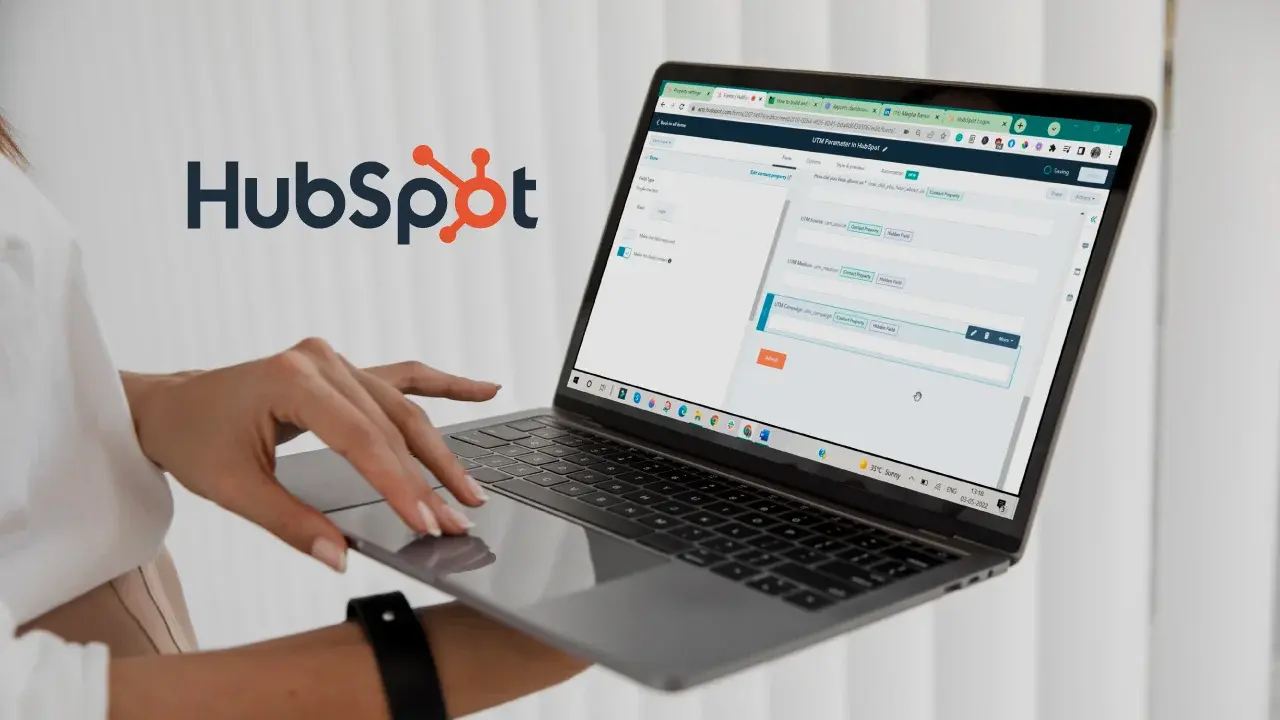Introduction
The workflows look like spaghetti, half the contacts are named “Test,” and no one knows who created that mysterious pipeline called “Do Not Touch.”
Congrats! You’re now the HubSpot Admin. Whether you volunteered, got voluntold, or just clicked one too many buttons, welcome to HubSpot's wild (and wildly powerful) world.
Messy CRM setups, untracked leads, and broken workflows aren’t just annoying but revenue killers. While some teams are stuck troubleshooting email issues, others are already scaling campaigns, automating lead handoffs, and generating pipelines with precision.
That’s the kind of transformation only a great HubSpot Admin brings. No wonder everyone’s looking for one.
In this blog, we’ll walk you through exactly how to get started as a HubSpot Admin, from mastering the ecosystem to setting up automation, reporting, and ongoing ops hygiene, so you can stop firefighting and start building scalable systems that drive growth.
Your HubSpot admin kickstart plan: 7 steps to scalable success!
Step 1: Understand the HubSpot ecosystem
Before you customize anything, you need to know what you’re working with. HubSpot isn’t just a CRM but a full-stack growth platform with powerful hubs for marketing, sales, service, and content.
Each hub solves a different ops headache. Marketing Hub automates lead nurturing, Sales Hub streamlines pipelines, Service Hub boosts customer retention, and CMS Hub lets you control your web presence without relying on IT.
The internal marketplace in the HubSpot ecosystem allows HubSpot users to browse, preview, and install website design templates without leaving their portal.
This gives users the ability to browse and install directly from within the app (rather than redirecting them to a separate website), lowering the friction for customization.
You'll also hear terms like “Contacts”, “Workflows”, “Deals”, and “Properties”. Get comfy with this lingo as it’s the foundation of every automation, list, and report.
And don’t forget integrations as HubSpot connects with your tools like Slack, Zoom, Salesforce, and Stripe to ensure that admins can build a single source of truth instead of juggling 10 tabs.
AI is playing a key role in revamping the HubSpot ecosystem. HubSpot’s AI-first platform will create a $30B partner ecosystem by 2028. This includes build and service opportunities driven by AI integration.
Step 2: Set up and customize HubSpot
Your portal isn’t merely plug-and-play. Hence, setting it up correctly is where smart operations begin.
Start with the basics: set your company name, logo, time zone, and currency. You’d be surprised how many reports go wrong just because someone skipped the time zone setting.
Next, lock down user roles. Not everyone needs admin access. Give Sales, Marketing, and Service teams the right permissions so they stay focused and out of each other’s dashboards.
Finally, customize key settings, tailor deal stages, email templates, and contact properties to reflect your process. Because a CRM should fit your business, not the other way around.
HubSpot Academy is a great starting point for learning how to set up and use HubSpot effectively.
Step 3: Data management
Although 90% of business leaders see data literacy as crucial for success, only 25% of employees trust the accuracy of their data. Teams can find ways to cope, but ultimately, it's the business's responsibility to ensure data is secure and trustworthy.
Data quality is a significant challenge due to issues such as ambiguity, duplication, and poor accessibility, all of which erode trust. High-quality data must be accessible, consistent, and relevant to its intended purpose.
Source: HubSpot
Improving it starts by identifying critical data, collaborating with experts, and setting tailored data management rules.
Garbage in, garbage out. If your data’s a mess, your insights and revenue will be no different. With organized data, you can leverage analytics to amplify conversions.
Start by importing clean, structured data that includes contacts, companies, deals, and tickets using CSVs. Follow best practices like consistent formatting and unique IDs to avoid duplicates and chaos later.
Need to track something unique to your business? Create custom properties. Whether it’s “Partner Tier” or “Renewal Date,” these fields power smarter segmentation and automation.
Speaking of segmentation, active and static lists are your secret weapons. Use them to target the right leads, trigger workflows, and deliver personalization at scale.
Step 4: Automation & workflows
Workflows were created to address issues related to manual follow-ups, missed handoffs, and leads becoming inactive in your CRM.
HubSpot’s automation engine lets you trigger emails, assign tasks, update records, and rotate leads effortlessly. It’s like having an extra team member who never sleeps or forgets.
Start simple: send a welcome email when a lead fills out a form, notify sales when a contact hits an MQL score, or assign a task when a deal moves stages.
Then go deeper. Use if/then branches, delays, and lead scoring to build intelligent nurture flows that adapt to buyer behavior and drive pipeline while your team focuses on strategy.
👉 Here’s a step-by-step guide on HubSpot Sequences for smarter marketing automation.
On the automation overview page, you can use Breeze, HubSpot’s AI assistant, to build new workflows, explore recommended automation setups, and get a snapshot of all automation tools active in your HubSpot account.
Source: HubSpot
Step 5: Reporting & analytics
If your team’s making decisions based on gut feel, you're not scaling; you’re merely guessing.
HubSpot’s reporting tools turn your CRM into a control center. From website traffic to revenue attribution, every interaction can be tracked, visualized, and optimized.
Use pre-built dashboards to get quick visibility, or create custom reports tailored to your KPIs, whether it’s MQL-to-SQL conversion, deal velocity, or ticket resolution times.
Track what matters:
✅Marketing: traffic sources, form submissions, email engagement
✅Sales: pipeline stages, win rates, rep performance
✅Service: ticket response time, NPS, customer retention
You can use HubSpot marketing analytics & dashboard software to track all your campaign performance in one place with built-in reports and dashboards.
Source: HubSpot
Likewise, HubSpot's web traffic analytics tool lets you track website visits by source, topic cluster, device, country, and more.
For example, the Sources report highlights where your traffic is coming from across the web. You can explore how HubSpot defines each source for deeper insights.
Source: HubSpot
When reporting is clean, revenue alignment finally becomes real.
👉 Here are the 7 HubSpot reports tracking the performance of paid ads.
Step 6: Stay up-to-date and continuous learning
HubSpot is evolving at a rapid pace, and so should your skills.
The right place to begin is with the HubSpot Academy. It’s free, constantly updated, and offers certifications like HubSpot Marketing Software, HubSpot CMS for Developers, and more. Whether you're a beginner or scaling pro, there’s something for every admin.
Also, join the HubSpot Community as it includes a variety of forums, LinkedIn groups, and local user groups that are goldmines for practical tips, troubleshooting hacks, and real-world use cases.
Source: HubSpot
And don’t sleep on the HubSpot Blog. It’s where product updates, beta features, and smart strategies show up first, so you’re always a step ahead.
Step 7: Best practices for HubSpot admins
Being a HubSpot Admin isn’t just about setup, but also about long-term success.
✅Document everything: From naming conventions to automation rules, so when your team scales or shifts, you’ve got a ready-to-use ops playbook.
✅Run regular audits. Clean your database, check for broken workflows, outdated lists, and unused properties. Healthy CRM = accurate reporting = better decisions.
✅Collaborate across teams. Sales, marketing, and service should all inform how HubSpot is structured. A great admin bridges silos and keeps the system aligned with revenue goals.
Great admin work may not always be in the limelight, but the impact is impossible to undermine.
It’s a wrap
A disorganized HubSpot portal doesn’t just slow you down but also leaks pipeline, frustrates your team, and clouds decision-making.
Without a dedicated admin, automation breaks down, data becomes messy, and your go-to-market motion suffers across the board, from MQL to closed-won to retention.
Getting started as a HubSpot Admin isn’t just about setting up properties and workflows. It’s about building a clean, scalable engine that supports your revenue goals across every team, every tool, every touchpoint.
That’s where we help revenue teams cut through the HubSpot clutter and build scalable systems that drive growth.
Let’s turn your CRM into the growth engine it was meant to be.
 Dashboards and analytics
Dashboards and analytics




.webp)




